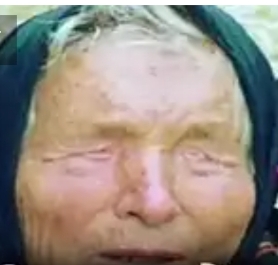Burkitt Lymphoma – Causes, Symptoms, and Treatment Options
Burkitt lymphoma is a highly aggressive and fast-growing form of non-Hodgkin lymphoma (NHL), a cancer affecting the lymphatic system. It is named after the British surgeon Denis Burkitt, who first described the disease in African children in the 1950s. Burkitt lymphoma is characterised by the abnormal growth of B-cells, a type of white blood cell responsible for producing antibodies.
Burkitt lymphoma is divided into three subtypes. Each variety affects people differently depending on where they live, their age, and whether they have particular underlying medical concerns, and whether they have particular underlying medical concerns; each variety affects people differently. The risk of Burkitt lymphoma is higher in males than in females.
The three types are:
Endemic- This virus is what leads to mononucleosis. Tumours commonly develop in the jawbone or other facial bones in children with endemic Burkitt lymphoma.
Sporadic-Burkitt lymphoma of this sort is prevalent in the US. More children than adults are impacted by it. In children with non-Hodgkin lymphoma, Burkitt lymphoma makes up more than 40% of cases.
Immunodeficiency-related- People with acquired human immunodeficiency virus (HIV/AIDS) are affected by this kind of Burkitt lymphoma.
Causes of Burkitt Lymphoma
Burkitt lymphoma’s exact cause is unknown. Burkitt lymphoma cells are the subject of research, and the condition is linked to alterations in the MYC gene and other genes that have been discovered in the cancer cells.
The MYC gene regulates some elements of cell growth. What alters the genetic makeup remains a mystery to researchers.
Burkitt lymphoma is an uncommon kind of non-Hodgkin lymphoma, making up about 1–5% of cases. Children are more likely to develop it, and the typical age at diagnosis is 6. Males are three to four times more likely than females to have this type of cancer.
Symptoms of Burkitt Lymphoma
Adults and children are affected by Burkitt lymphoma in different ways. Many of the symptoms of Burkitt lymphoma are similar to other disorders.
The following are some common symptoms:
Fever
Sweating at night
Unexplained weight loss
Fatigue
Lack of energy
Specific forms of this cancer may bring on additional symptoms. They are:
Facial bone distortion
Abdominal swelling
Abdominal pain
An enlarged thyroid
Enlarged tonsils
Intestinal blockages
Bowel pain and bleeding
Treatment of Burkitt Lymphoma
The primary treatment for Burkitt lymphoma is intensive intravenous chemotherapy, frequently requiring a hospital stay. The treatment known as intrathecal chemotherapy involves injecting chemotherapy medications directly into the cerebrospinal fluid because Burkitt lymphoma can spread to the fluid around the brain and spinal cord.
Burkitt lymphoma may also be treated with intense chemotherapy along with:
The patient’s stem cells are collected, maintained, and transferred to the body during an autologous stem cell transplant.
Treatment using radiation
The use of steroids
If Burkitt lymphoma is not treated, it is deadly. Burkitt lymphoma in children is typically curable with early, aggressive treatment, with 60% to 90% long-term survival rates. Results vary more frequently in people who are adults. Early intervention is generally linked to 70% to 80% longer-term survival rates.
Conclusion
Burkitt lymphoma can quickly spread and cause mortality if not treated correctly. Children who get intensive treatment have the highest rates of long-term survival. Most Burkitt lymphoma patients who receive prompt diagnosis and treatment go into long-term remission, or cancer-free, mode. Children are more likely than adults to get long-term remission. Healthcare professionals have made enormous strides in treating Burkitt lymphoma in adults and children. This malignancy is uncommon, aggressive, and potentially fatal.
FAQs
Q. How does one take care of oneself during treatment for Burkitt lymphoma?
A. Treatment for Burkitt lymphoma might be difficult. Aside from the physical side effects, you or your child might have to spend days in the hospital, interfering with family, professional, and academic obligations. Here are some ideas that might be useful:
Involve your network of family and friends who could be able to support friends at home if you or your child will be in the hospital for several days.
Treatment can be draining, and you or your child can feel worn out after finishing it. Allow yourself and them space to recover.
Healthy eating is essential for cancer recovery since cancer treatment might affect your or your child’s appetite.
Some kids experience self-consciousness because they are receiving therapy, experiencing side effects, or simply missing out on school and friends. Ask your doctor about the services provided by a child life specialist.
Q. What percentage of Burkitt lymphoma patients survive?
A. The majority of Burkitt lymphoma patients who are diagnosed and get prompt treatment go into long-term remission or a cancer-free state. Compared to adults, kids are more likely to experience long-term remission.
Q. What are the side effects of the treatment?
A. Fatigue, nausea and vomiting, diarrhoea, and constipation are a few of the typical adverse effects of chemotherapy. However, tumour lysis syndrome can appear in patients undergoing treatment for rapidly growing lymphomas such as Burkitt lymphoma.




Comments
Post a Comment